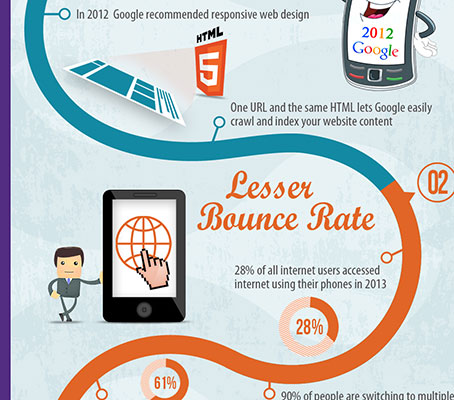Eager To Uncover Just How Website Style Has Changed In Time? Dive Into The Evolution From Simpleness To User-Focused Experiences
Eager To Uncover Just How Website Style Has Changed In Time? Dive Into The Evolution From Simpleness To User-Focused Experiences
Blog Article
Material Writer-Kahn Peters
In the past, sites were straightforward and focused on details. Navigating was straight, and design was for desktops. Currently, customer experience is key. Data guides layouts for simple navigation. Receptive formats fit different gadgets. Today, dark setting lowers pressure, and minimalist food selections boost navigating. Interactive features engage individuals, and vibrant visuals stick out. AI assimilation boosts interaction. See exactly how layout has actually evolved to improve your on the internet journey.
Early Days of Website Design
In the early days of web design, simpleness reigned supreme. Web sites were fundamental, with restricted colors, fonts, and designs. https://www.northbaybusinessjournal.com/article/opinion/4-digital-marketing-strategies-to-ready-your-business-for-the-holidays/ was on supplying information as opposed to flashy visuals. Users accessed the net through slow-moving dial-up links, so rate and performance were vital.
Navigating food selections were straightforward, usually situated at the top or side of the web page. Web sites were designed for desktop computers, as mobile surfing wasn't yet prevalent. Material was king, and developers focused on easy readability over intricate layout elements.
HTML was the main coding language made use of, and designers needed to work within its constraints. Computer animations and interactive attributes were marginal compared to today's requirements. Sites were static, with little vibrant content or individualized user experiences.
Increase of User-Focused Style
With the evolution of site design, a shift towards user-focused design concepts has come to be significantly famous. Today, producing sites that focus on user experience is critical for engaging visitors and achieving company objectives. User-focused style includes recognizing the needs, choices, and habits of your target market to customize the site's layout, material, and features as necessary.
Developers currently perform thorough research, such as user surveys and use testing, to collect understandings and feedback straight from users. This data-driven strategy assists in creating intuitive navigating, clear calls-to-action, and visually enticing interfaces that reverberate with site visitors. By positioning the customer at the center of the design procedure, websites can supply an extra tailored and satisfying experience.
Responsive layout has likewise become a vital aspect of user-focused layout, guaranteeing that websites are enhanced for various gadgets and display sizes. This flexibility boosts access and functionality, catering to the varied ways individuals engage with websites today. Essentially, the rise of user-focused layout indicates a shift towards developing electronic experiences that prioritize the needs and assumptions of the end individual.
Modern Trends in Web Design
Explore the current patterns shaping web design today. One popular trend is dark mode layout, offering a streamlined and modern look while reducing eye stress in low-light atmospheres. An additional crucial trend is minimal navigation, streamlining food selections and improving individual experience by concentrating on essential elements. Integrating micro-interactions, such as animated switches or scrolling results, can create an extra interesting and interactive website. Receptive style stays critical, making certain seamless customer experiences across different tools. Additionally, utilizing vibrant typography and unbalanced formats can add aesthetic rate of interest and accentuate details content.
Incorporating AI modern technology, like chatbots for customer support or personalized recommendations, boosts customer engagement and streamlines procedures. Accessibility has additionally come to be a substantial fad, with developers focusing on comprehensive layout techniques to satisfy varied user requirements. Welcoming sustainability by enhancing web site efficiency for rate and performance is one more arising pattern in web design. Teaming up with customer feedback and information analytics to iterate and boost design continuously is important for remaining pertinent in the ever-evolving electronic landscape. By welcoming these modern-day trends, you can produce a visually appealing, user-friendly web site that reverberates with your audience.
Conclusion
As you assess the development of site design from the early days to currently, you can see how user-focused layout has actually become the driving pressure behind contemporary patterns.
Accept the journey of modification and adaptation in website design, constantly keeping the individual experience at the forefront.
Stay present with the most recent trends and technologies, and never stop advancing your strategy to create aesthetically spectacular and easy to use web sites.
Progress, adjust, and develop - the future of web design remains in your hands.
